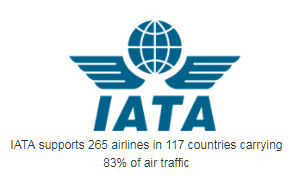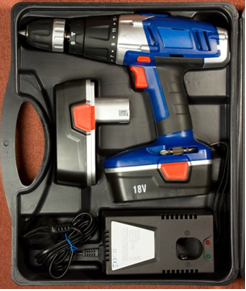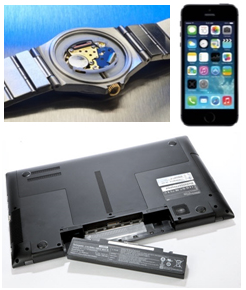Shipping Lithium-based Batteries by Air
Lithium batteries are dangerous goods and transporting them is only permitted with UN 38.3 certification according to the UN Manual of Tests and Criteria. The International Air Transport Association (IATA) assists by publishing the IATA Dangerous Goods Regulations (DGR) that helps classify, mark, pack, label and document dangerous shipments. DGR is recognized by all major airlines.
Lithium-based batteries are divided into  Li-ion found in mobile phones and laptops,
Li-ion found in mobile phones and laptops,
and the more restrictive lithium-metal used in sensing devices as well as some
consumer grade AA, AAA and 9V formats.
Airlines allow both types as carry-on, either installed or carried as spare packs, as long as they don’t exceed the following lithium limitation:
The lithium content in the battery governs the energy storage capacity (runtime) measured in watt-hours (Wh). The Wh measurement is used to limit the quantity a passenger can bring onboard an aircraft, what can be transported outside of the Class 9 dangerous goods designation, and what mandates Class 9. To calculate the lithium content, multiply the rated capacity (Ah) times 0.3. For example, a 1Ah cell has 0.3 grams of lithium. To derive Wh, multiply Ah by the cell voltage of 3.6V. A typical laptop battery of 14.4V and 5Ah has 72Wh. (Lithium content: 5Ah x 0.3g = 1.5g x 4 cells in series = 6g).
IATA differentiates between batteries contained in the equipment (non-removable) and batteries that are packaged separately. If contained, such as in watches, smartphones or laptops, the Wh limit is ignored if less than 100Wh. However, if the battery is packaged with the equipment and is interchangeable, such as a removable pack of a power tools, then the battery must be counted. Figures 1a and 1b illustrate examples of “contained in equipment” and “packaged with equipment.”


Figure 1b: Packed with equipment (UN3480)
Battery is not fitted or joined to the device.
Example: Power tool with spare pack. 30% SoC rule applies
Figure 1a: Contained in equipment (UN3481)
Battery is fitted or joined to the actual device
Example: Watch, laptop, calculator.
30% state-of-charge (SoC) rule does not apply.
Since 2016, lithium batteries can no longer be carried in passenger aircraft as cargo. Under DGR, the packaging instructions (PI) are organized into PI 965 to PI 970. PI 965 covers Li-ion cells and battery packs only (UN3480), while PI 966 includes Li-ion installed in equipment and PI 967 combines Li-ion with equipment (UN3481). Because of higher lithium content, lithium-metal batteries are handled separately under PI 968 to 970 (UN3090 and UN3092). Most lithium-metal are non-rechargeable.
Transporting lithium batteries is divided into two categories:
Safety laws apply the strictest requirements first to assure that the conditions can be met. To make the guidelines more palpable for the general public, the tables below list the less stringent conditions first, by larger battery quantifies. This puts the established numbering system in reverse sequence. Note that Sections IA, IB and II are in Roman numerals.
Fello Tech Co., Ltd established in 2005, is specialized in the research and manufacturer of lithium polymer battery, li-ion battery, LiFePO4 battery and primary lithium batteries. It occupies more than 30000 squares feet of floor space and employs more than 1000 skillful workers in production team with more than 40 experienced engineers and technician and becomes one of the most innovative lithium batteries manufacturer in the industry.
With 15 year’s of battery engineering and design experience, Fello Tech provides customers with effective and efficient battery solutions. Fello Tech has a proven reputation with a broad customer base for the supply of high safety batteries, battery packs and customized batteries.
You can contact us any way that is convenient for you. We are available 24/7 via !
If you need any lithium battery or battery packs, please send us your detailed information about the voltage, the capacity and the size.
 online service
online service 86 755 89351622
86 755 89351622 sales@fellotech.com
sales@fellotech.com lucyjiang123
lucyjiang123 +8613691821586
+8613691821586